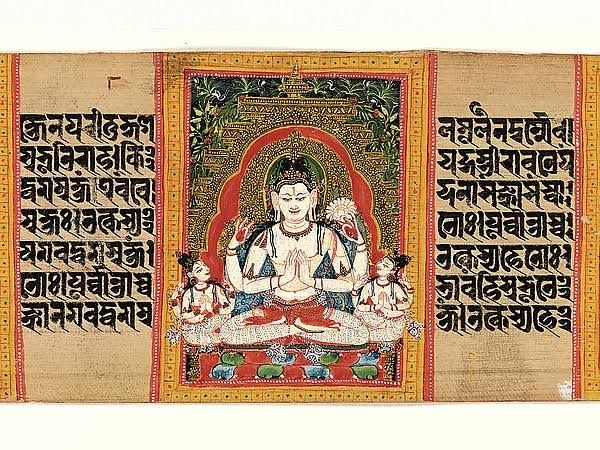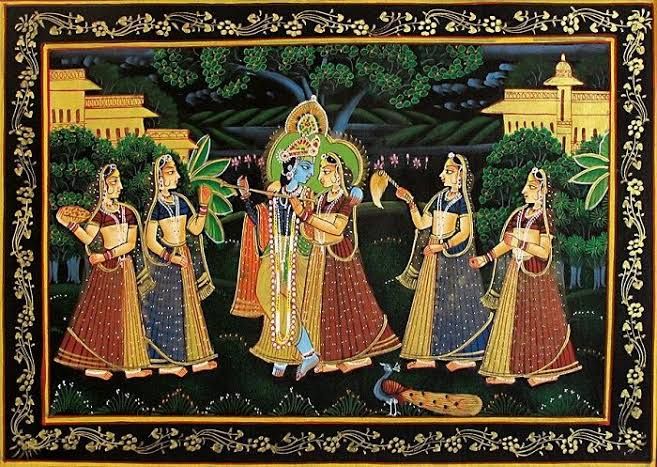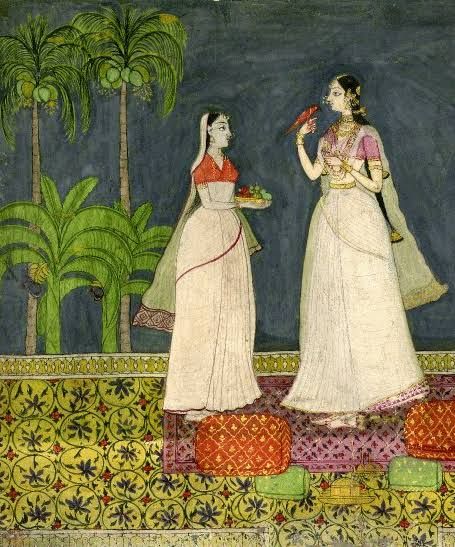Miniature Paintings
Sep 28, 2019 • 381 views
Origin and Background
Originated in 750 AD in the eastern part of India, Miniature paintings established themselves as an important art form under the rule of the Pala rulers. Their beginning is a result of the tradition of drawing and writing the teachings of Lord Buddha on palm leaves that was followed by the people in the eastern region. Since palm leaves are not very large in size, the paintings done on them had to be miniature in nature giving birth to this art form. From the eastern part, these paintings spread to the western region in 960 AD under the rulers of the Chalukya Dynasty. The paintings which though were practiced and made in different parts of the country gained their actual popularity under the Mughal rule. Miniature paintings with the changing times, went through a number of evolutions, adapting and changing with different cultures and kingdoms. The paintings which we perceive today as miniature paintings can be considered as an umbrella term which includes the same miniature paintings just done in various styles influenced by Mughal rulers, Persian style, European art form, Rajasthani elements, etc.

Miniature Painting - Source: Red Bag
Types of Schools
Pala School - This school of painting as the name suggests developed under the rule of the Palas in the period 8th century AD. The themes portrayed in these paintings revolved around the teachings of Buddha and other such deities. These paintings are characterized by the usage of natural colors, graceful lines, and skillful overall execution. Not just in India but these paintings were famous in countries like Nepal, Sri Lanka, Tibet, etc.

Pala School Painting- Source: Life Stalker
Orissa School - This school of paintings evolved much later in the 17th century. There are not many pieces of evidence of this school but with the available materials, it can be seen that these paintings employed bold and strong colors and strokes and the themes are very expressive in nature. Another interesting feature is that under this school, the paintings were still done on the palm leaves.
Mughal School - It is one of the most prominent forms of miniature paintings. A combination of Indian style and Persian style, the Mughal school of paintings was prominent throughout the period of 16th - 18th century. The main reason for the flourishing of this school was the sheer importance given by the Mughal rulers to this art form, Emperor Akbar being the most important one. From the realistic depiction of nature to the portrayal of the lives of the emperors, these miniature paintings covered various phases and sections of the Empire. Anup Chattar, Inayat and Mohammed Nadir are few of the many recognized artists of miniature paintings under this school.

Mughal School Painting- Source: Pinterest
Rajasthani School - Originated after the decline of Mughal school of painting, Rajasthani school was a reflection of the way of life of the Rajputs. The paintings done in this school were quite inspired by the Mughal form of art but at the same time had its own unique and distinctive features. This school too like Mughal school flourished due to the love that the rulers had for art and the constant support and patronage that the artists received. The best of this school is seen on the work done on materials like paper, ivory and silk. Use of bold and contrasting colors which expressed the nature of the Rajput society is one of the most important aspects of this school.

Rajasthani School Painting- Source: Cultural India
Pahari School - This school of miniature paintings came into existence in the 17th century. The paintings made under this school are an amalgam of both Rajasthani and Mughal art of miniature paintings. Where on one hand, the bold and contrasting colors used in Rajasthani style are employed, on the other hand the intricacy and high embellishments that are seen in Mughal style are also a part of Pahari school. Under this school, the paintings portray themes relating to nature as well as mythology.
Deccan School - Beginning in the 16th century and lasting till the end of 19th century, the Deccan school of miniature paintings was based on the beliefs and traditions of Turkey, Persia and Iran. Areas like Tanjore, Hyderabad, Golconda, Ahmednagar and Bijapur were the hub of this school of painting. Symmetry and precision are the most prominent features of this school. From sensuous females to beautiful architecture, these paintings touched upon themes that were different from other schools and their uniqueness is what made them popular.

Deccan School Painting- Source: WordPress
Method and Techniques
Miniature paintings are work of precision and accuracy in a small framework. Following are the most basic steps to begin with miniature paintings.
The first step is to draw the sketch which is usually done with either light blue or reddish brown ink on a smooth paper.
This sketch is then traced or copied on the final surface that is to be used.
Next comes the step of coloring. Different colors and shades that were authentically prepared using natural sources are used to present various elements.
Another important step which is usually seen in most of the paintings is gold highlighting and burnishing. In this step a piece of agate stone is used to stroke the miniature painting which is kept face down on a hard surface. This is done to give texturing as well as a protection to the painting.
Themes and Significant Elements
Miniature paintings include in them diverse and varied range of themes and topics. From religious references, mythological tales to the beautiful representation of elements of nature, all of these are depicted in various styles and forms in these paintings. Whether it is the story of Radha - Krishna, the court scenes of Mughals or the depiction of flora and fauna there is nothing that cannot be found in these paintings.
Interesting facts
It is one of the art forms which has been in existence since the medieval times and is still practiced worldwide.
These paintings usually take much more time than the larger ones.
These paintings are created not only on paper or cloth but on wood, marble and ivory as well.
